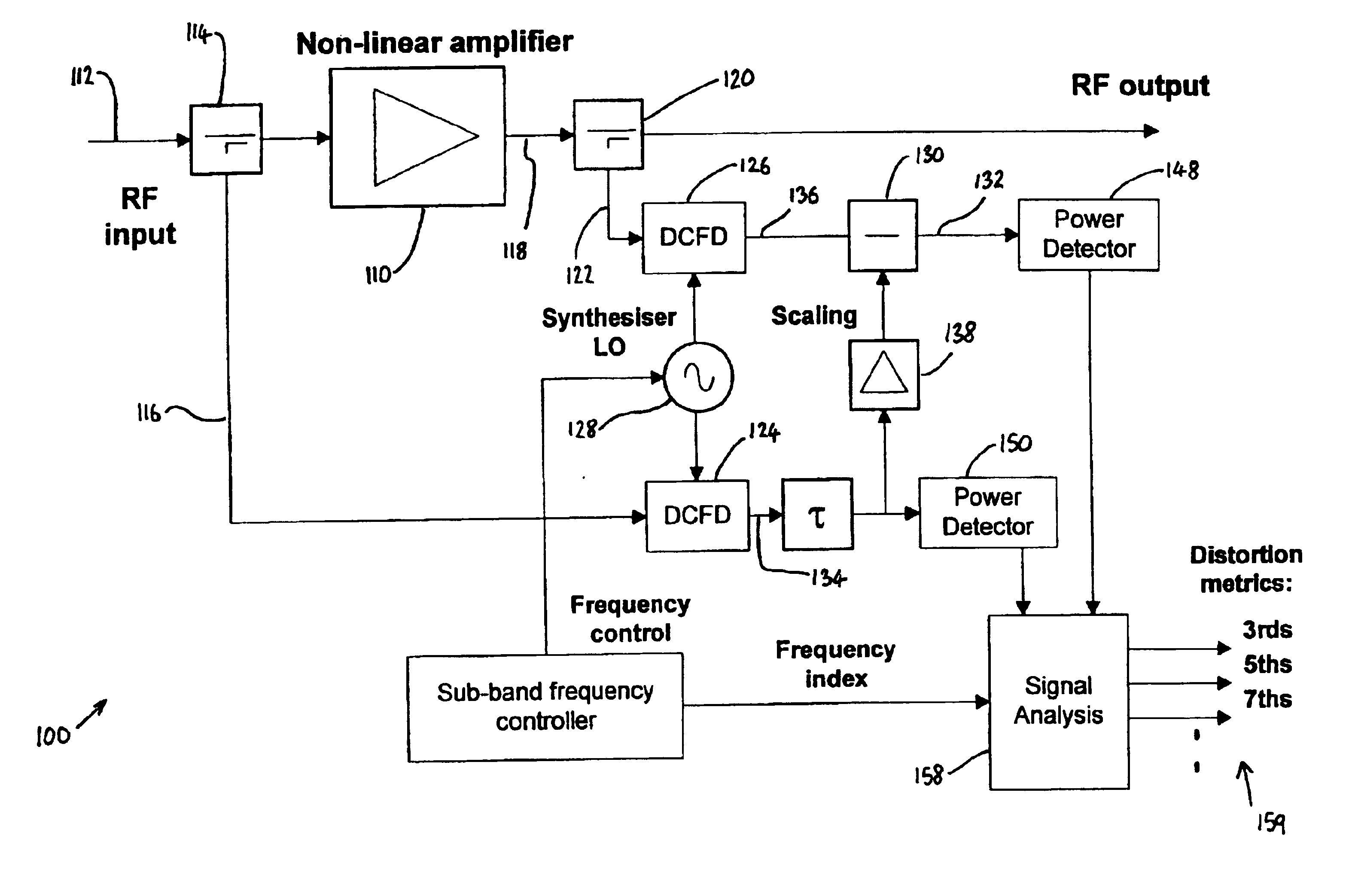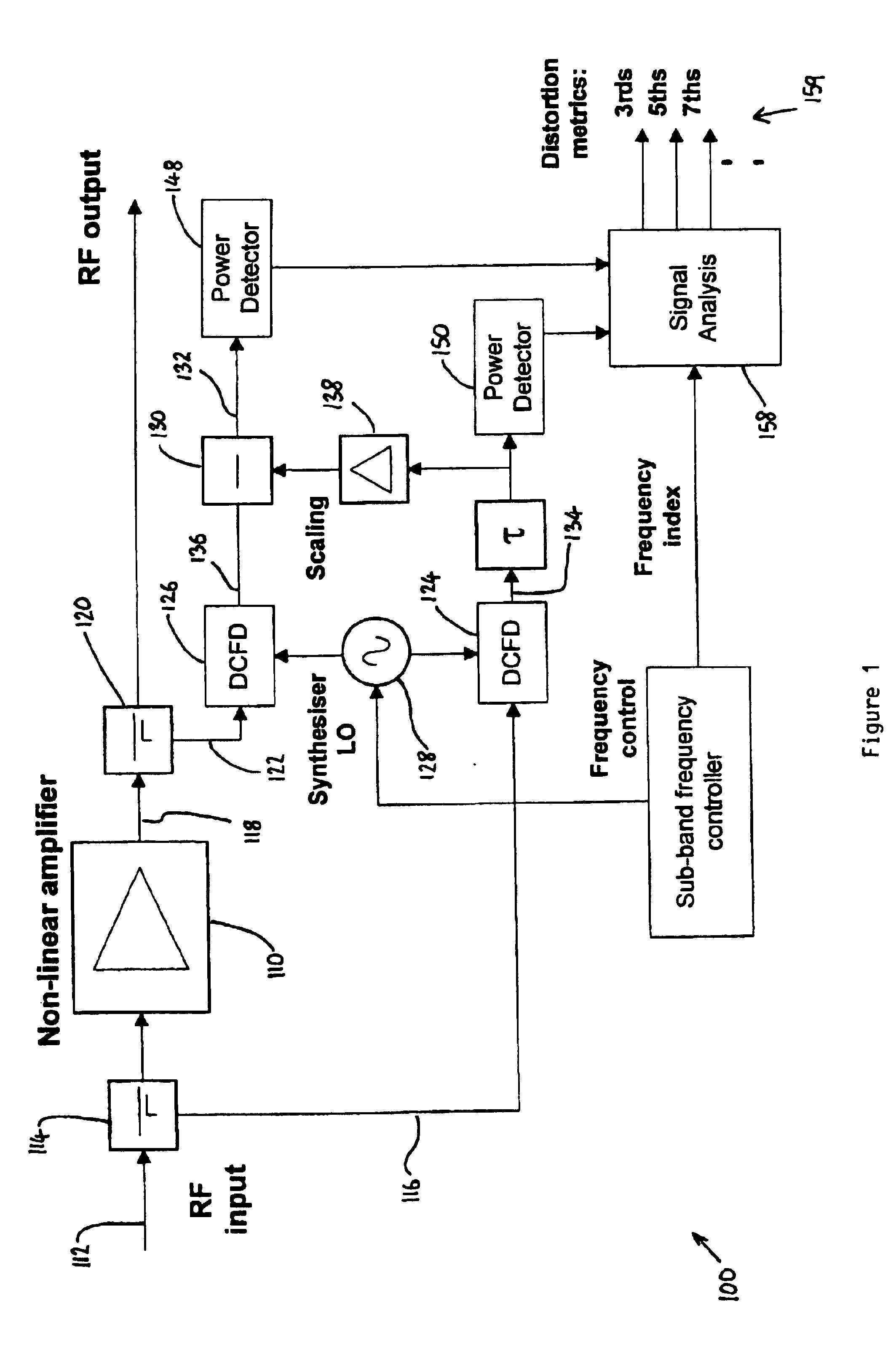Distortion detection for a power amplifier
- Summary
- Abstract
- Description
- Claims
- Application Information
AI Technical Summary
Benefits of technology
Problems solved by technology
Method used
Image
Examples
Embodiment Construction
[0018]Distortion detection scheme 100 in FIG. 1 operates on non-linear amplifier 110. Amplifier 110 is a wide band radio frequency power amplifier having a non-linear characteristic such that it imposes intermodulation distortion upon signals passing through it. The distortion detection scheme 100 provides signals indicative of this distortion which can be used by an appropriate distortion reduction mechanism (not shown), for example, a predistorter operating on the input 112 to amplifier 110, subsequent to coupler 114.
[0019]The input signal 112 is sampled at coupler 114 along path 116. The output 118 of the amplifier 110 is sampled at coupler 120 along path 122. The signals on paths 116 and 122 are frequency down-converted and filtered by Down Conversion, Filtering and Digitisation (DCFD) units 124 and 126 respectively. The downconversion performed by units 124 and 126 is performed by mixing the incoming signal with a local oscillator (LO) signal from frequency controlled synthesis...
PUM
 Login to View More
Login to View More Abstract
Description
Claims
Application Information
 Login to View More
Login to View More - R&D
- Intellectual Property
- Life Sciences
- Materials
- Tech Scout
- Unparalleled Data Quality
- Higher Quality Content
- 60% Fewer Hallucinations
Browse by: Latest US Patents, China's latest patents, Technical Efficacy Thesaurus, Application Domain, Technology Topic, Popular Technical Reports.
© 2025 PatSnap. All rights reserved.Legal|Privacy policy|Modern Slavery Act Transparency Statement|Sitemap|About US| Contact US: help@patsnap.com



